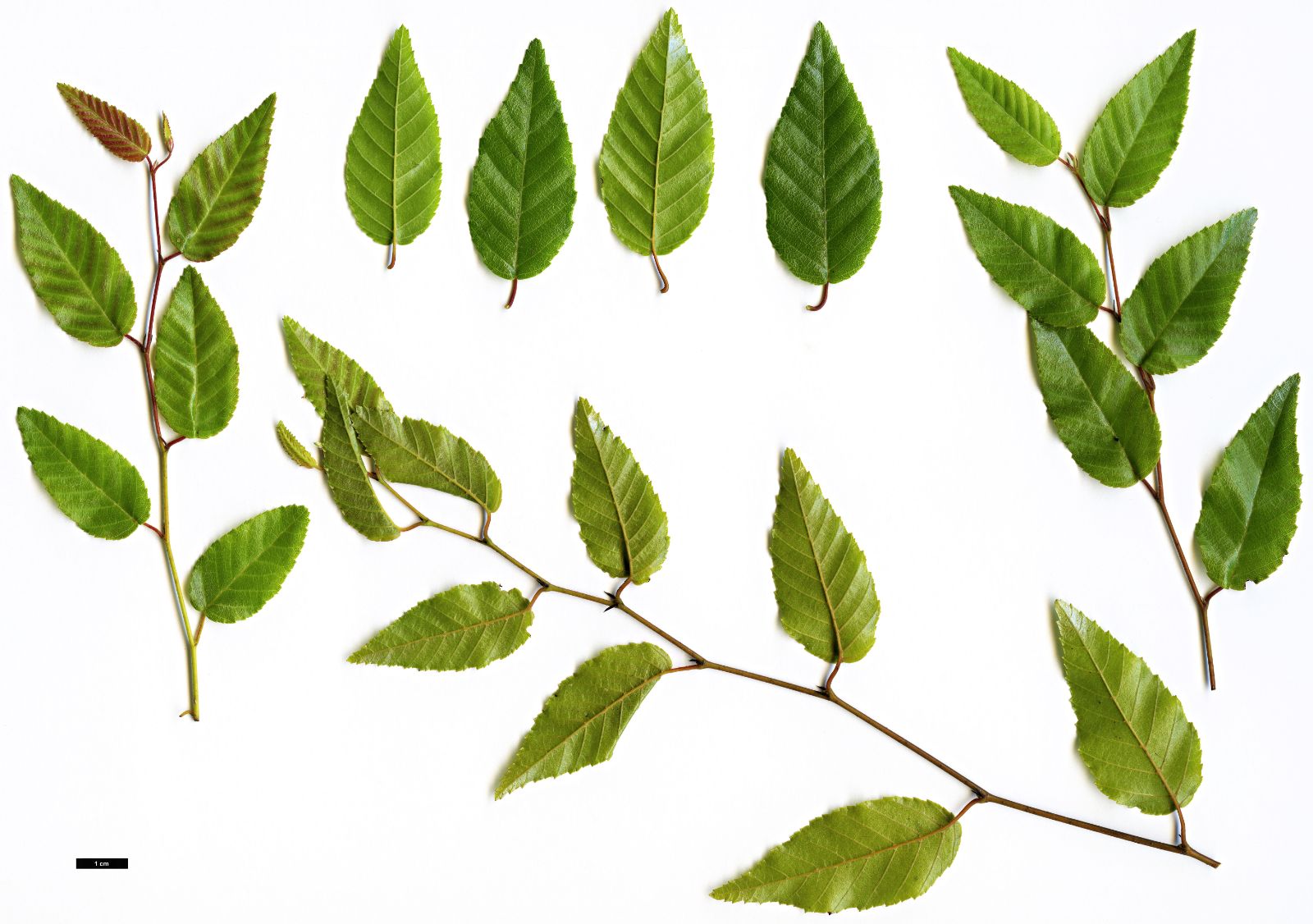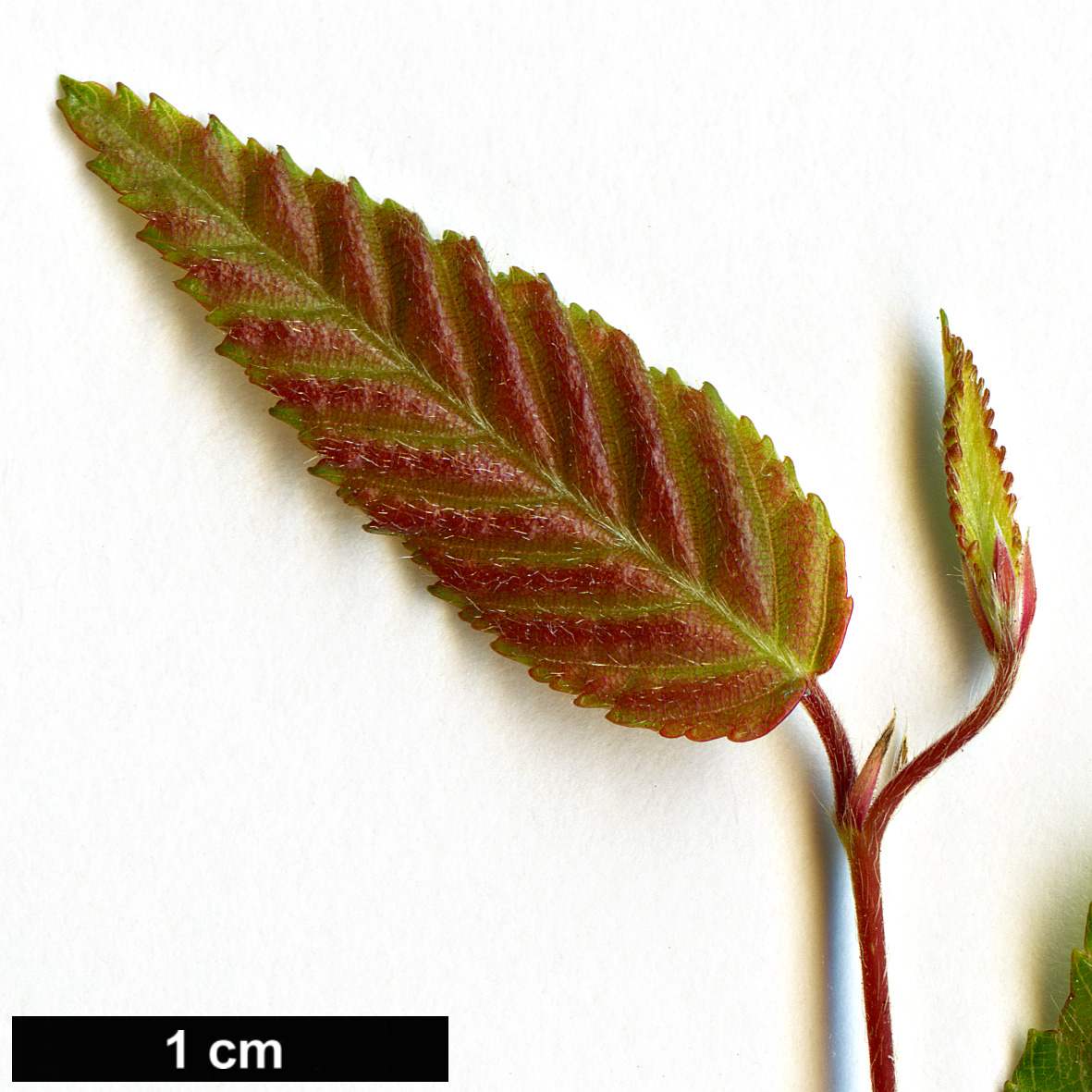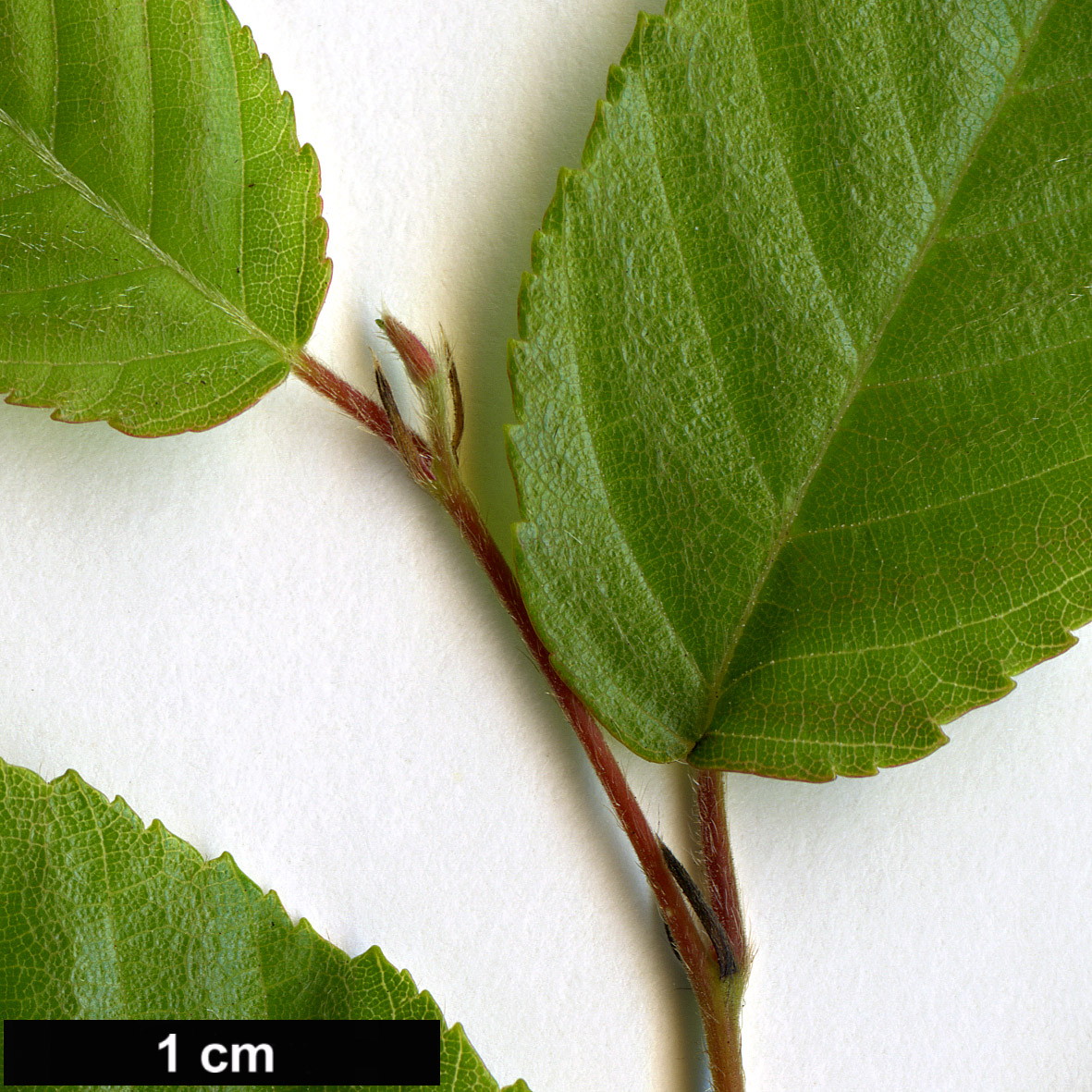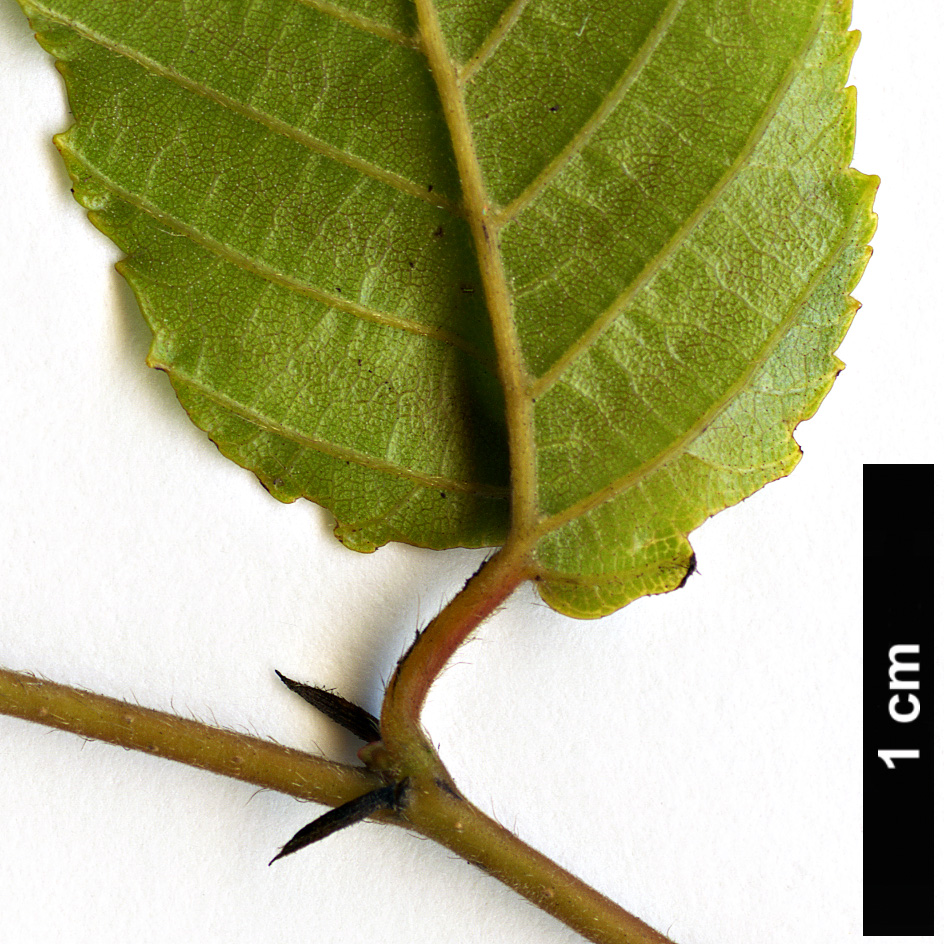Carpinus hebestroma
Sponsor
Kindly sponsored by
Lord and Lady Aldington
Credits
Owen Johnson (2022)
Recommended citation
Johnson, O. (2022), 'Carpinus hebestroma' from the website Trees and Shrubs Online (treesandshrubsonline.
Genus
Other taxa in genus
- Carpinus betulus
- Carpinus caroliniana
- Carpinus cordata
- Carpinus faginea
- Carpinus fangiana
- Carpinus fargesiana
- Carpinus henryana
- Carpinus japonica
- Carpinus kawakamii
- Carpinus laxiflora
- Carpinus londoniana
- Carpinus mollicoma
- Carpinus monbeigiana
- Carpinus omeiensis
- Carpinus orientalis
- Carpinus polyneura
- Carpinus pubescens
- Carpinus rankanensis
- Carpinus × schuschaensis
- Carpinus shensiensis
- Carpinus tropicalis
- Carpinus tschonoskii
- Carpinus turczaninovii
- Carpinus viminea
Tree to 8 m; bark dull grey, smooth then somewhat fissured. Twigs purplish-brown, slender, pubescent. Leaves ovate lanceolate to lanceolate, 5–5.5 × 1.4–1.5(–1.8) cm; base rounded; apex long-pointed; becoming glabrous; margin with irregular, simple teeth; lateral veins in 11–12 pairs; petiole slender, 7–10 mm, pubescent. Female catkin 3–3.5 cm long in fruit; peduncle 1.5–2 cm, pubescent; bracts broadly D-shaped, 7–10 mm long, sparsely pubescent along veins, the straight side entire, with an auricle at the base to clasp the nutlet, the rounded side incised-dentate but not lobed. Nutlet c. 2.5 × 1.5 mm, densely pubescent. (Li & Skvortsov 1999).
Distribution Taiwan Taroko Gorge National Park, Hualian Xian
Habitat Limestone mountain-sides.
USDA Hardiness Zone 8
RHS Hardiness Rating H4
Conservation status Critically endangered (CR)
Carpinus hebestroma was described by Yoshimatsu Yamomoto in 1932 from a tiny area of eastern Taiwan. It grows alongside the more widespread C. kawakamii, differing in its downier twigs, the more consistently simple toothing of the leaves, and in particular in the very small inflorescence and short fruit-bract (Li & Skvortsov 1999). Although its population lies entirely within the Taroko Gorge National Park in a zone only accessible by permit, the species was assessed in 2014 as Critically Endangered (Shaw et al. 2014), due to the increasing risk of landslides within the very steep mountain terrain.
One year before this assessment was made, Carpinus hebestroma had been collected for the first time by Cédric Basset and Manon Rivière, working with the National Park staff, from the Wulu Valley (CMBTW 1674). In 2022, small seedlings were growing at the couple’s nursery, Pépinière des Avettes in north-west France (Basset 2015; Pépinière des Avettes 2022), and two were available for sale. The species appears easy to grow, and with its slender, dark green leaves is exceptionally dainty. The hardiness rating suggested here is that of C. kawakamii; widespread cultivation may reveal both or either species to be a little tougher than this.





